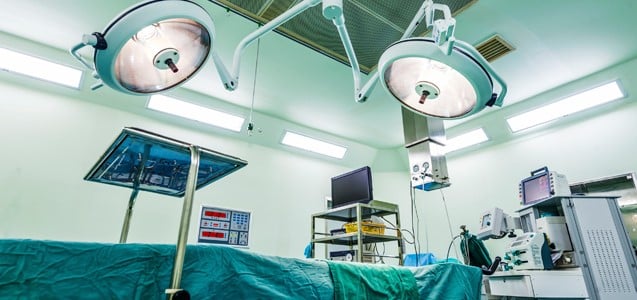Pulmonary embolism (PE) is a leading cause of preventable death in the United States, where it is estimated that at least 100,000 Americans die of PE every year. Pulmonary embolism occurs when a blood clot travels to the lungs, where it gets stuck and blocks blood flow, causing fluid and pressure buildup, damage to lung tissue and, in serious cases, cardiac arrest and sudden death. The blood clots which travel to the lungs to become pulmonary emboli first form in the deep veins within the body, and are called deep vein thrombosis (DVT). DVTs most typically form in the lower legs.
It is most common for people who are physically restricted to experience DVTs and PEs. When patients are in a cast or physically immobile for any reason, the lack of body movement slows down blood flow, allowing blood to easily clot. Recent surgery also puts individuals at a higher risk. In order to avoid PE after surgery, medical professionals should use compression stockings, pneumatic cuffs (called intermittent pneumatic devices, or IPDs), physical therapy, anticoagulant medication to keep the blood thin, or a combination of these preventive therapies.
Symptoms of pulmonary embolism include:
- Sudden shortness of breath
- Sharp chest pain
- Rapid heart rate & breathing
- Sweating
- Anxiety
- Coughing up blood
- Fainting
- Heart palpations
Often, by the time these symptoms are present, the patient’s life is in immediate danger and emergency treatment is needed. The period preceding the PE emergency may be the best time to prevent the PE, and involves careful observation of the immobilized or recent surgical patient, including observation of their arms and legs for unusual swelling, discoloration, an arm or leg warm to the touch, and assessment of any complaints of arm or leg pain or cramping.
It is important to know:
- As many as 900,000 people are impacted by DVT and PE every year.
- Sudden death is the first symptom of PE in almost 25% of people who have PE
- One-half of the people who survive DVT and PE will have long term complications
Pulmonary embolism is the most common cause of preventable death in patients hospitalized for surgical procedures. Recent studies have also recognized PE as one of the most frequently missed diagnoses in living patients. Our experienced attorneys fight for individuals who have been negatively impacted by the negligence of others.
If you have had a pulmonary embolism after surgery because a health care professional failed to take the necessary precautions to ensure your safety call The Yost Legal Group at 1-800-YOST-LAW (967-8529) for a free consultation.
The Yost Legal Group – Experienced Attorneys Dedicated to Protecting Your Rights

